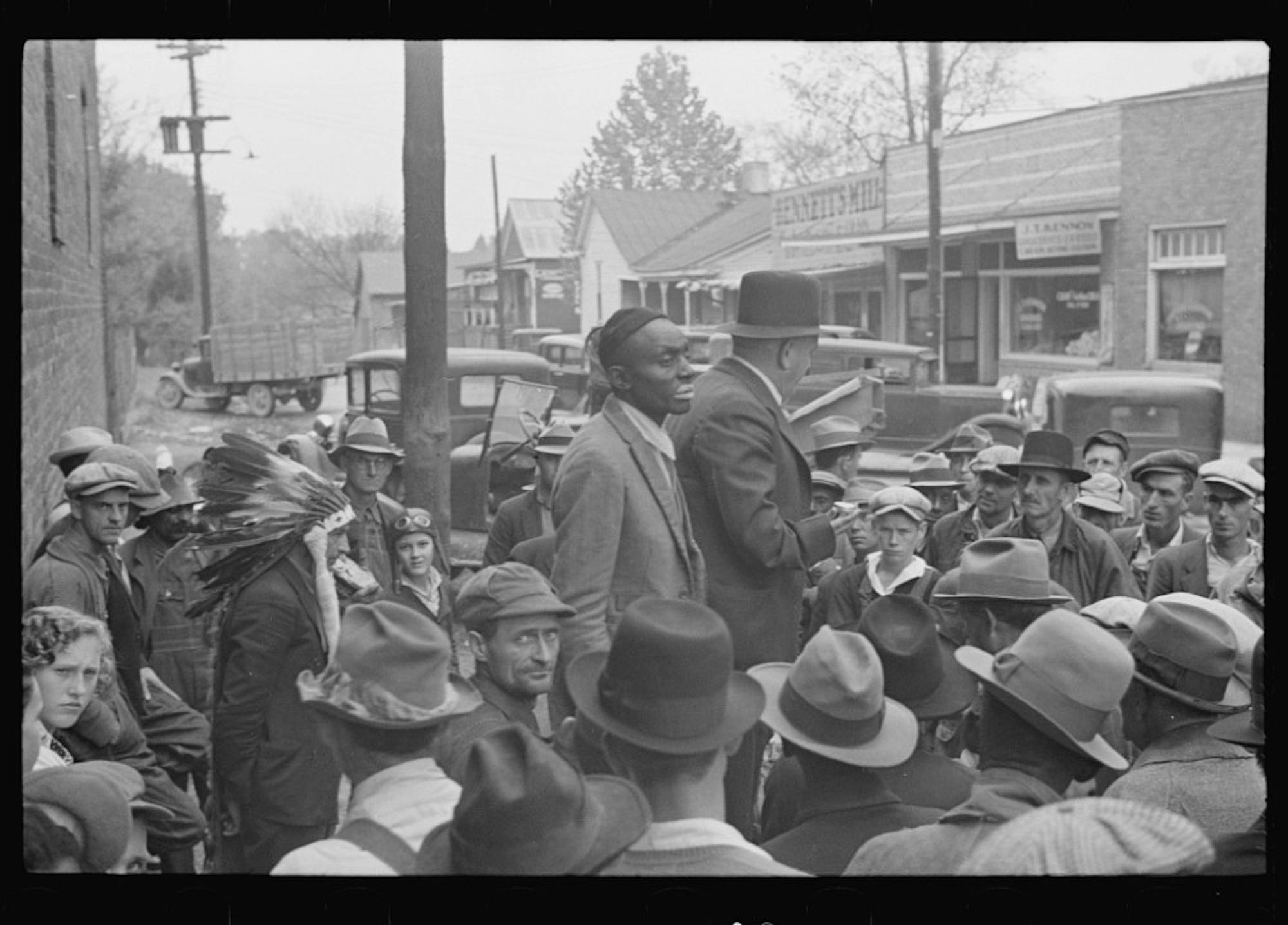Harvard University's Carpenter Center for the Visual Arts is currently showing "Time is Now: Photography and Social Change in James Baldwin's America," a multi-artist photography exhibit running through Dec. 30. The exhibition highlights facets of African-American life in the north and south from the 1930s to the 1960s, providing a visual context to the stories of novelist and social activist James Baldwin. The exhibition was developed in conjunction with Teresita Fernandez' installation nearby, which was inspired by one of Baldwin's essays.
The program's webpage explains that "Time is Now" attempts "to visualize and explore the places, the personal, and historical events that framed Baldwin's life and themes in his writing." These include the history of race and racism in America, community and activism. The result is a collection of slice-of-life photographs, some political and others personal. Many photos depict young people in their natural elements, like Ben Shahn's "Creole girls, Plaquemines Parish, Louisiana" (1935), showing three young women playing an old-fashioned guitar — a scene that is touching in its simplicity. Others capture famous events in our nation's history, like the March on Washington in 1963 and the Selma, Ala. march in 1965.
Many scenes, simply all subjects are black in the mid-20th century, are a mixture of personal and political. Visual signs of racism are present in scenes of day-to-day life. These include "Segregated drinking fountains labeled 'white' and 'colored' in the Dougherty County Courthouse, Albany, Georgia" (1962) by Danny Lyon and a shot of James Baldwin himself in Steve Schapiro's "James Baldwin, Colored Entrance Only, New Orleans" (1963). In this portrait, Baldwin is wearing a suit and tie under an ornate, fur-lined coat, holding a cigarette and looking daringly into the camera. Behind him is an ice cream parlor with a white worker lurking from behind the window blinds. Here, Baldwin shows strength and dignity in a society that attempts to demean him; in one of the Life Magazine profiles of Baldwin on display in the exhibition, he is quoted saying (to a mostly white audience), "I represent sin, love, death, sex, hell, terror and other things too frightening for you to recognize."
Many images are painful. A clear, stark portrait of a woman is "Untitled (from 'There is No More Time,' Wife of the Lynch Victim)" by Marion Palfi in 1949. She is not angry, nor is she in fresh, raw mourning like the victims' families in Arthur "Weegee" Fellig's photography. She looks resigned, tired and grieved. In a sense, this is an almost greater tragedy. Other shots, like "The Line" (1962) by Danny Lyon, depict minstrel shows or what look like indentured servants, all black and wearing matching white uniforms, working on farms overseen by men on horseback.
This is the point at which the exhibition's biggest problem manifests: It does not give its visitors quite enough information to appreciate and analyze what they're seeing. None of the photographs have placards, although there is a leaflet provided which gives a guide to each photograph, listing the title, photographer and other basic information. But at no point is any significant backstory displayed for any of these pictures, despite that many could use more context.
Were those men in "The Line" indentured servants or prisoners put to work or simply hired laborers? Ben Shahn's "Untitled (medicine show, Huntingdon, Tennessee)" (1935) depicts a minstrel, an aviator and a white man wearing a Native American headdress, all standing around a white emcee addressing a mixed-race crowd.
Is it a carnival? Why is it called "medicine show?" These are questions that, if they cannot be answered with certainty, could likely be explained with more historical background, given that all of these photographs are from Harvard's permanent collection. Another downside of the exhibition is the lack of information about any of the photographers, besides their names and dates.
Despite this disappointing lack of context, one great feature of this exhibit is its spread of contemporary coverage from magazines, like features from Life Magazine and Harper's Bazaar magazine on Baldwin and his activism, through incendiary, scathing commentary.
In a Life Magazine spread from 1963, Baldwin is quoted: "I know you didn't own a plantation or rape my grandmother, but I wasn't bought at auction either and you still treat me as if I had been." He also says, "White people seem to ask us, 'Come into my nightmare and be like me; have abortions like me instead of illegitimate children.' But we don't want to be like you. There is no reason whatever for Negroes to want to enter white society."
And this pressure from white society is visible in the articles themselves. Many have ads on the opposite page showing white models drinking beer, ironing and wearing expensive socks.
Altogether, "Time is Now" is an effective and moving illustration of the lives James Baldwin wrote about, in all their humanity, unity and struggle. Those who have read Baldwin will appreciate the contextualization of his environment, and even casual fans will see a wholistic, if somewhat bare exhibition of African-American life across the country at such a pivotal period of its history.
Harvard's Carpenter Center explores James Baldwin's world in photography exhibition

Ben Shahn's photograph, titled 'Untitled (medicine show, Huntingdon, Tennessee)' (1935), is one of the images featured in the exhibition.
Summary
"Time is Now" honors the perspectives and times of James Baldwin but is more of a taste than a study.
4 Stars





